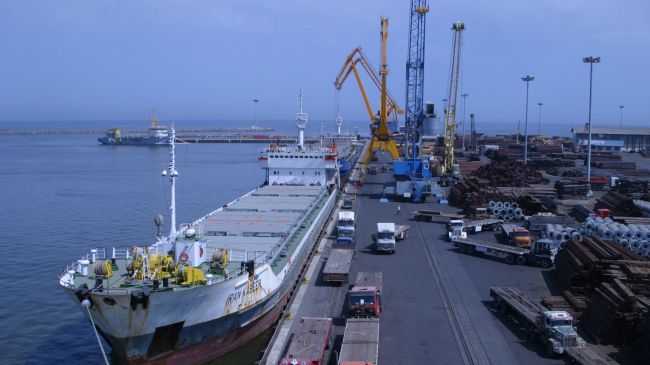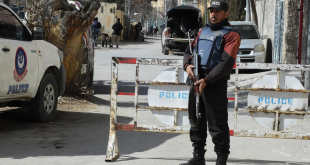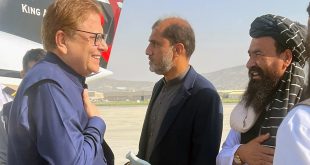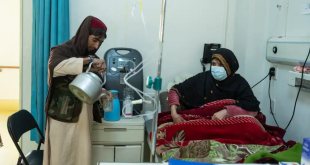In Tehran, there is little confusion about how they perceive the southern port city of Chabahar. Journalists and members of the strategic community in Iran’s sprawling capital explain in a matter of fact fashion that Chabahar is the city where India is building a port.
This generous description of India’s investment in this strategically located city —which geographers and historians claim is the starting point of Indian sub-continent —should suggest a paradigmatic shift in ties between the two countries, but a visit to Chabhar, located barely 75 kilometres from China funded Pakistan’s Gwadar, presents a complicated picture more so after the election of Donald Trump as the next US President. Strange setting
The Iranian government is keen that India fast-tracks its commitment to build the three jetties allotted to it so that the trilateral treaty between India-Iran and Afghanistan to improve connectivity and trade acquires meaning. The Indian government’s perception of the speed at which the project has to be executed doesn’t really square with Iranian expectations, but this is not holding back Tehran from leveraging it as the project that can change Afghanistan. During the forthcoming “Heart of Asia” meet to be held in Amritsar on December 4 to discuss regional solutions to stabilise war torn Afghanistan, the very articulate foreign minister of Iran, Muhammad Javad Zarif Khonsari, would position Chabahar project as an economic panacea for the landlocked country.
For a project that has provided a grand strategic option to sidestep Pakistan and reach Central Asia, Chabhar still suffers from media darkness. ‘Google search’ yields no ground reporting in any TV or newspaper. Even when an alleged R&AW agent, Kulbhushan Jadhav, who claimed to be based in Chabahar, was arrested by Pakistani authorities for spying in Baluchistan, there was no reporting from here. From this standpoint, it was important to visit this port city to understand the strategic and commercial implications of the promised Indian investment.
Chabahar surprises a first-time visitor. Its airport is located in the middle of a desert and seems straight out of an Indiana Jones film. A Second World War airfield in the neighbouring town of Konarak— yes Konarak— this is being replaced by a swankier one that is coming up in Chabahar. The road to the port city that passes the Martian Mounts — an amazing geo-morphological phenomenon that gives tourists a feeling of being on planet Mars — is truly world class. The road also passes the fishing village of Tis, overlooked by a decrepit Portuguese mud fort. For long, its description of a somnolent fishing village served for Chabahar as well. Once you enter its free zone then it seems a different story all together. It is then one realises the enormous investment and effort successive Iranian governments have made to build a port away from the trouble-torn Persian Gulf.
Work in Chabahar began in the 1970s when Shah of Iran, Reza Pehlavi , was in power. After the 1979 Islamic revolution, the US companies involved in various infrastructure projects left the country. These projects were taken up by new government. It was during the Iran-Iraq war when the ships were reluctant to enter the Strait of Hormuz that the port of Chabahar gained importance.
Revenue potential
After the war ended, the Iran government began to see in the development of Chabahar an opportunity to build the eastern part of the country. The ambitious plan was to weave a network of roads and railways to help in the transshipment of goods to neighbouring countries. While Bandar Abbas was being used for sending goods through the evolving North-South Corridor to Europe, Chabahar was expected to deal with the Eastern axis that could carry goods from here to landlocked Afghanistan and Central Asia.
The Iranian government, after the easing of sanctions earlier this year, views extraordinary potential through transit fees. It believes in a few years time its revenues could exceed that from oil and gas. As of now, only 10 million tonnes or 10 per cent of its transit capacity has been realised.
When it offered India an opportunity to develop the port in Chabahar to fix its problems about sending goods to Afghanistan due to Pakistan refusal to give land access, it was not just altruism to help war ravaged Kabul, but also hard-nosed realism.
Afghanistan was cribbing about its transit arrangement with Pakistan and was keen to liberate itself from its stranglehold. Iran’s Chabahar gave an important opportunity to cross over through socially and politically stable Iran and trade with India. For Indian companies, too, it was an opportunity to reach Kabul and beyond to Central Asia. Chabahar is about 900 kilometres from Gujarat’s Mundra port.
China’s hand
Development of Gwadar port —entirely funded by the Chinese — and the coming up of $46 billion 2,400 kilometre long China, Pakistan Economic Corridor (CPEC) to Kashgar in Xinjiang province blocked India’s ambitions to revive its traditional routes to Central Asia. This way, CPEC not just formalised the 1947 partition between India and Pakistan, but it also conveyed to New Delhi an important message: there was no economic compulsion for Islamabad to normalise economic ties with India. China, in some ways, had snatched Pakistan from the Indian sub-continent.
Though, it is being denied, India decided to invest in Chabahar, to neutralise these happenings and give meaning to its policy in Afghanistan. Quite expectedly, Afghanistan traders are laying considerable store on the development of the port, which is being deepened to receive ships of higher tonnage. In a month’s time, the port authorities would be ready for Indian ships.
Meanwhile, Omani passenger ships have begun to take advantage of the port. A day after this writer’s visit, the first passenger ship was received here. “Why can’t we have Indian ships visiting Chabahar even before they begin trade,” wondered a member of Iran’s think tank.
Although the India-Iran-Afghanistan agreement lays down specific time lines for the completion of the project, there are fears in Tehran that the Indian government may go slow in fulfilling these targets as it would like to know the mind of the new US administration about the Iran nuclear deal. If India is weighed down by this attitude then it would be doing great harm to its cause as Chabhar is not just a new trading post, but also a staging point for launching India’s soft power as everyone here speaks in Hindustani or Urdu as they like to call it. (The Hindubusinessline)
 Afghanistan Times
Afghanistan Times




